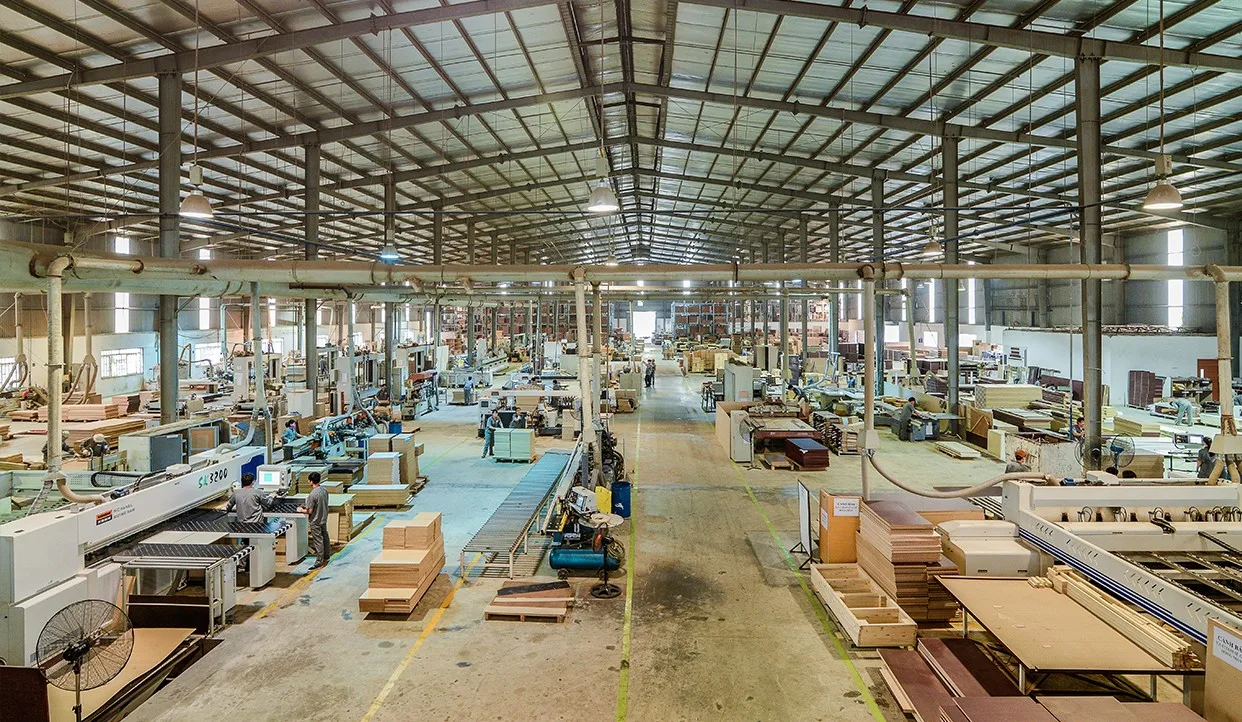Vietnam has become one of the top global sources for high-quality, competitively priced furniture. From sleek modern designs to handcrafted wooden pieces, Vietnamese furniture is in high demand across North America — especially in the United States and Canada. But for many small to medium-sized businesses (SMBs), the idea of importing internationally can feel overwhelming.
This guide will walk you through the complete process of importing furniture from Vietnam, highlighting key logistics, customs regulations, trade agreements, and how to simplify it all with the help of a digital freight forwarder.
Why Source Furniture from Vietnam?
Vietnam’s furniture industry has experienced tremendous growth thanks to:
- Skilled craftsmanship and advanced production techniques
- Abundant timber supply and competitive labor costs
- Growing commitment to sustainability and certified wood sourcing (FSC)
- A wide range of styles, including custom-made furniture options
Vietnam is especially known for its solid wood furniture made from rubberwood, acacia, teak, and oak, as well as bamboo and rattan pieces for indoor and outdoor use.
Who’s Involved in the Import Process?
To ensure a smooth import operation, it’s important to understand the main stakeholders involved:
- You (The Buyer/Importer): A retailer, wholesaler, or designer sourcing goods for sale in the US or Canada.
- Vietnamese Manufacturer: The factory or supplier producing your furniture.
- Vietnam Customs: The agency ensuring compliance with export laws.
- Customs in the US/Canada: National authorities that manage import regulations.
- Freight Forwarder: Your logistics partner, especially if you choose a digital freight forwarder, who handles shipping, customs, and insurance in one platform.
A digital freight forwarder like Ship4wd can consolidate all logistics services, allowing you to stay focused on business growth.
 Understanding Vietnam’s Export Requirements
Understanding Vietnam’s Export Requirements
While your Vietnamese supplier is typically responsible for compliance on the export side, you should ensure they:
- Register with Vietnam’s Department of Planning and Investment
- Have proper tax registration and business licenses
- Provide all required documents such as the Customs Declaration and comply with standards like FSC (for wooden furniture)
Most furniture exports from Vietnam are exempt from export duties, and goods often qualify for 0% VAT when shipped internationally.
Key Trade Agreements
Vietnam has signed several trade agreements beneficial for North American importers:
- Vietnam–U.S. Bilateral Trade Agreement (BTA)
- Comprehensive and Progressive Agreement for Trans-Pacific Partnership (CPTPP)
These agreements can offer reduced tariffs and simplified procedures — especially useful when importing furniture.
Choosing the Right Incoterms for Shipping
Incoterms determine who’s responsible for shipping, insurance, and customs duties at different stages of the shipment. Common terms used in furniture imports include:
- FOB (Free on Board): Seller handles goods until loaded on the ship; buyer takes over from there.
- EXW (Ex Works): Buyer is responsible from the seller’s factory.
- DAP (Delivered at Place): Seller arranges everything until goods arrive at your location.
- CIF (Cost, Insurance & Freight): Seller covers shipping and insurance until port arrival.
Choosing the right Incoterm impacts cost, convenience, and risk — your freight forwarder can help you decide based on your shipment size and timeline.
Shipping Furniture from Vietnam: Logistics Options
You’ll primarily choose between sea freight and air freight:
- Sea Freight: Ideal for large, heavy, or bulk furniture orders.
- FCL (Full Container Load): Best for big shipments — full control over packing and security.
- LCL (Less than Container Load): Share container space if you’re shipping smaller volumes.
- Air Freight: Faster but more expensive — used for urgent or high-value shipments.
Additional Considerations:
- Door-to-door service simplifies the entire shipping process.
- Proper packaging is essential for bulky, fragile items.
- Cargo insurance protects your goods from damage or loss in transit.
- Key documents like the Bill of Lading, Packing List, and Commercial Invoice are essential for customs clearance.
Importing Furniture into the USA & Canada: Regulations & Duties
Documents You’ll Need:
- Commercial Invoice
- Packing List
- Bill of Lading
- Certificate of Origin
- Customs Declaration (Form B3 in Canada, CBP Form 3461 in the US)
USA-Specific Requirements:
- Customs Bond
- Merchandise Processing Fee (MPF)
- Harbor Maintenance Fee (HMF)
- Compliance with the Lacey Act (regulates imported wood products)
Canada-Specific Requirements:
- GST (5%) on most imports
- Canada Customs Invoice
- Excise tax or duty on luxury goods (if applicable)
Tariff classification via HS Codes is essential for calculating the right duty rates. Your freight forwarder can assist in correctly classifying your products.
Why Work with a Digital Freight Forwarder?
Partnering with a digital freight forwarder offers many advantages for SMBs:
- One-stop platform for quoting, booking, tracking, and insuring shipments
- Expert support in handling documentation, Incoterms, customs clearance, and duty payments
- Streamlined logistics from Vietnamese factories to your North American destination
This means fewer headaches, reduced risks, and faster go-to-market timelines for your products.
Final Thoughts: Start Importing Furniture from Vietnam with Confidence
Importing furniture from Vietnam to the US or Canada can be a profitable opportunity — if you understand the process and have the right support. By working with reliable suppliers, understanding your shipping and customs responsibilities, and partnering with a knowledgeable digital freight forwarder, your business can successfully bring beautiful, high-quality Vietnamese furniture to your customers.
Ready to import? Start your sourcing journey with a logistics partner who makes international trade simple and stress-free.